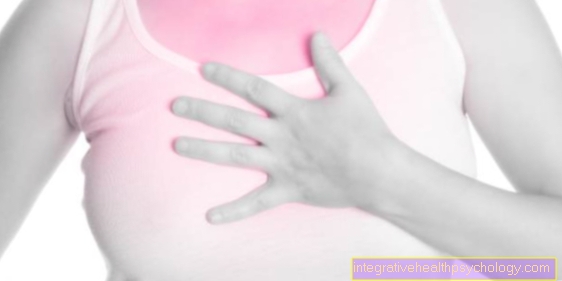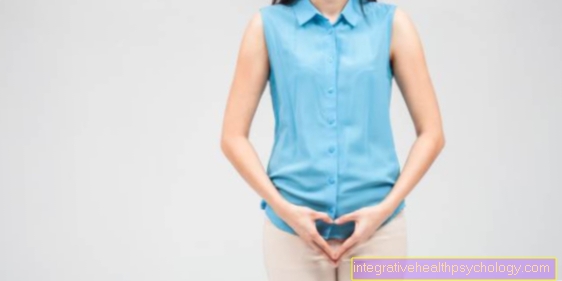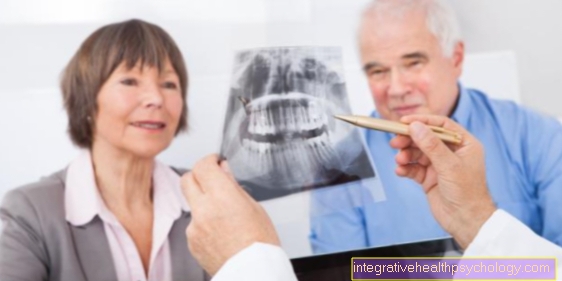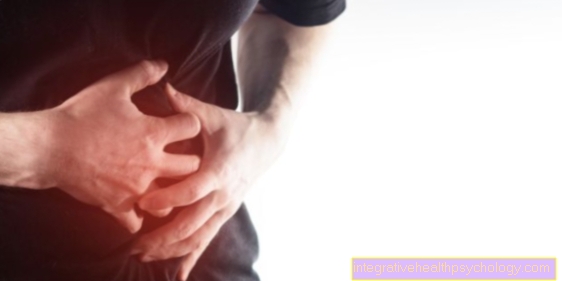Dexamethasone
introduction
Dexamethasone is an artificially produced active ingredient that belongs to the group of glucocorticoids. Natural glucocorticoids (hormones) are produced in the human body in the adrenal cortex and fulfill a variety of regulatory tasks.
The synthetic glucocorticoid dexamethasone has an inflammatory and immune system inhibiting effect and is 25 times more effective than the hormones produced in the adrenal gland.
Taking dexamethasone generally has a throttling effect on the production rate of the adrenal cortex. This means: the higher the dexamethasone concentration in the organism, the lower the glucocorticoid synthesis in the cells of the adrenal cortex. This interaction can be used effectively in medical diagnostics.

application areas
Dexamethasone fulfills a wide variety of functions in the human organism and can therefore be used in a variety of ways:
- On the one hand it has an anti-inflammatory effect, on the other hand it has a strong inhibitory effect on the immune system.
- In addition, the active ingredient dexamethasone is able to stabilize cell walls and alleviate the symptoms of an allergic reaction.
- Furthermore, dexamethasone has a soothing effect on gastrointestinal problems such as nausea and vomiting.
- It is used for the acute treatment of accidents in which there is inhalation of toxic Steaming, Gases or smoke and thereby to water retention in the lungs (toxic edema) is used.
- It can also be used to treat water retention in the brain (cerebral edema). The active ingredient can also serve to compensate for a hormone deficiency (cortisol) in the organism.
- In the case of severe allergic reactions and / or a prolonged asthma attack, the administration of dexamethasone achieves considerable therapeutic success.
- The medically most relevant area of application, however, is the exclusion or diagnosis of Cushing's syndrome using the dexamethasone inhibition test (or dexamethasone suppression test)
Read more about: Cushing test - that's what it's important for!
Effects of dexamethasone
Dexamethasone is an active ingredient from the group of corticosteroids or glucocorticoids to which the most famous representative, cortisone, also belongs. Dexamethasone has anti-inflammatory and immunosuppressive effects, i.e. it dampens the immune system.
Dexamethasone is a very powerful glucocorticoid; it is 30 times more potent than cortisone.
It is used to treat various diseases: In cerebral edema that is associated with a dangerous increase in intracranial pressure, for example in the case of a brain tumor. For severe skin diseases with extensive skin infestation such as erythroderma.
With some autoimmune diseases such as lupus erythematosus or with acute attacks of vasculitis that affect the whole body. In rheumatism with pronounced severe courses. Also for some lung diseases such as a severe asthma attack.
In daily clinical practice, however, prednisolone is used much more frequently than dexamethasone, with the exception of brain edema.
dosage
The dosage cannot be given across the board as it depends on the indication.
Depending on the clinical picture, dexamethasone can be administered orally or intravenously (via a venous access).
For skin diseases, for example, it is often taken in tablet form. Here the daily dose is usually between 8 and 40 mg, in individual cases up to 100 mg can be given. The dose must be determined by the attending physician and can vary widely.
price
10 tablets of dexamethasone with a dose of 8 mg per tablet cost just under 22 euros. However, dexamethasone is only available with a prescription. If you present a prescription at the till, € 5 per prescription is charged.
There are numerous different dosages (0.5 mg, 1.5 mg, 2 mg, 4 mg, 8 mg) and pack sizes. 100 tablets of 8 mg dexamethasone cost around 123 euros.
Dexamethasone is also available in drop form. For example Monodex 1mg / ml. Here 50 small bottles with 0.4 ml cost around 28 euros. The eye drops also require a prescription.
Dexamethasone in tablet form
Dexamethasone is available as tablets in a dose of 0.5 mg, 1.5 mg, 2 mg, 4 mg or 8 mg. The pack sizes vary from 10 to 100 pieces. The recommended dose depends heavily on the underlying disease and should be determined by the attending physician.
Long-term use may cause any of the side effects listed above. The lowest price for 20 tablets of 0.5 mg each is 13 euros. The tablets require a prescription so that they usually only cost 5 euros for a health insurance patient.
Dexamethasone as an ointment
Dexamethasone is available as both a cream and an ointment.
The cream contains only dexamethasone and is intended for use on inflammatory skin changes. The cream requires a prescription. 25 mg costs around 15.50. If you present a prescription, you will have to pay 5.40 euros.
The ointment, on the other hand, is a combination preparation of dexamethasone, a disinfectant and an anti-fungal drug (nystatin). It is used for inflammatory skin diseases with simultaneous fungal attack.
The ointment requires a prescription. 20 g of Nystalocal ointment cost 21 euros. On prescription 5 euros.
Dexamethasone in ointment or cream form can cause side effects such as skin irritation with burning and itching of the skin and allergic reactions with rash up to anaphylactic shock. Long-term use can lead to thinning of the skin, changes in hair growth and streaking of the skin. So-called steroid acne, i.e. acne of the skin caused by long-term therapy with glucocorticoids, can also occur as a side effect.
Dexamethasone as an eye ointment / eye drop
Dexamethasone eye drops are available in different preparations. There are preparations that only contain dexamethasone as an active ingredient and there are numerous combination preparations.
These combination preparations usually consist of dexamethasone and an antibiotic. One example is Isoptomax® eye drops, which contain dexamethasone and the antibiotic neomycin. A further example is combination preparations made from dexamethasone and the antibiotic gentamicin. All of these preparations are used to treat eye infections.
If it is a combination preparation with an antibiotic, it is used for inflammation of the eye with simultaneous bacterial infection. Depending on the instructions of the ophthalmologist, the drops should be given into the affected eye one or more times a day.
Possible side effects include a slight stinging sensation in the eye and dilation of the pupil. With long-term use, the risk of developing increased intraocular pressure (glaucoma / glaucoma) can be increased. When dexamethasone is applied locally, there are usually significantly fewer side effects than with systemic therapy. All dexamethasone-containing eye drops require a prescription and are therefore usually no more than 5 euros for health insurance patients.
In addition to the eye drops, there is also dexamethasone eye ointment for use in inflammatory diseases of the eyes.
Dexamethasone inhibition test
With the so-called Dexamethasone inhibition test is it a Provocation test. In a healthy organism, the production rate of the adrenal cortex and thus the concentration of glucocorticoids (for example Cortisol) via a control loop between Pituitary gland and Adrenal cortex controlled.
At high cortisol concentrations, the production of a pituitary gland hormone (Adrenocorticotropin; short: ACTH) throttled. This in turn has the consequence that the adrenal cortex is made to reduce its synthesis capacity.
At low cortisol concentrations, the pituitary gland produces more adrenocorticotropin, which is transported to the adrenal cortex via the bloodstream and stimulates its synthesis rate. More cortisol is produced.
As a synthetic glucocorticoid, dexamethasone is now able to simulate an increased cortisol level in the body and thereby reduce adrenocorticotropin production and ultimately the synthesis of cortisol.
In a healthy person, the cortisol concentration should drop rapidly after taking the preparation.
However, in patients with Cushing's disease, pituitary-adrenal communication gets out of hand. Despite a high cortisol level, more adrenocorticotropin is formed, which ultimately leads to an uncontrolled increase in the cortisol concentration.
After taking dexamethasone, as expected, there is no inhibition of cortisol synthesis. In general, a distinction is made between a low-dose and a high-dose dexamethasone inhibition test.
In the low-dose method, a single oral administration of one to a maximum of 2 mg of dexamethasone takes place.
The high-dose test, on the other hand, requires an intake of around 8 mg of the active ingredient.
As a rule, two blood samples are taken on consecutive days. From the first sample, the cortisol concentration is determined BEFORE taking the dexamethasone, the second sample is taken about 12 hours AFTER the administration of the preparation.
From it, the cortisol concentration is determined after taking dexamethasone. A positive dexamethasone test (i.e. no reduction in synthesis after administration of the preparation) alone is sufficient to prove the presence of Cushing's disease. The dexamethasone inhibition test only gives an initial indication.
For more information, see: Cushing test - that's what it's important for!
A so-called CRH test, an insulin hypoglycaemia test and a 24-hour cortisol test in the urine should therefore be carried out for further diagnosis.
Read more on the topic: Taper off cortisone
side effect
The side effects of therapy with dexamethasone are limited with a short duration of therapy with low doses. However, since this cannot always be adhered to, numerous side effects can occur, which occur mainly in the context of long-term therapy.
In the blood and immune system, there may be an increased susceptibility to infections, changes in the blood count and a weakening of the immune system.
In the area of metabolic body functions, dexamethasone therapy can lead to the development of diabetes mellitus, increased appetite and weight gain, fat storage in certain areas (trunk obesity, bull neck, bloated face) and lipid metabolism disorders.
Possible psychological symptoms are irritability, increased drive, restlessness, depression, insomnia, psychoses and manic states so that increased caution is required, especially in mentally ill patients.
Furthermore, there may be an increased risk of seizures in patients with known epilepsy. Possible side effects in the eye are the development of glaucoma or cataracts (glaucoma / cataract).
Cardiac insufficiency, high blood pressure and cardiac arrhythmias can occur in the heart due to changes in blood salts.
In the area of the digestive organs, possible side effects are stomach ulcers with an increased risk of bleeding, inflammation of the pancreas (pancreatitis), inflammation of the esophagus (esophagitis) as well as nausea, vomiting and flatulence.
The skin and hair may show increased hair growth, thinning of the skin with parchment skin, blotchy or streaky changes in the skin and allergic reactions of the skin. In the area of the skeletal system, bone loss (osteoporosis), increased bone fragility, tendon tears, muscle weakness and, in childhood, growth inhibition can occur. Menstrual cycle disorders in women or impotence in men are also possible side effects.
interaction
Dexamethasone can increase the excretion of potassium and thus the effect of certain water tablets (diuretics). This can be dangerous if the potassium level drops too low, as this can lead to cardiac arrhythmias.
Dexamethasone inhibits the blood sugar-lowering effects of drugs used to treat diabetes mellitus and of blood thinners.
Some anti-epileptics and antibiotics cause an increased breakdown of dexamethasone, so that it is less effective.
The combination of dexamethasone and pain relievers from the group of non-steroidal anti-inflammatory drugs such as ibuprofen significantly increased the risk of developing a gastric ulcer with the risk of gastric bleeding. If such a combination is necessary, a stomach protection tablet should always be taken at the same time.





























